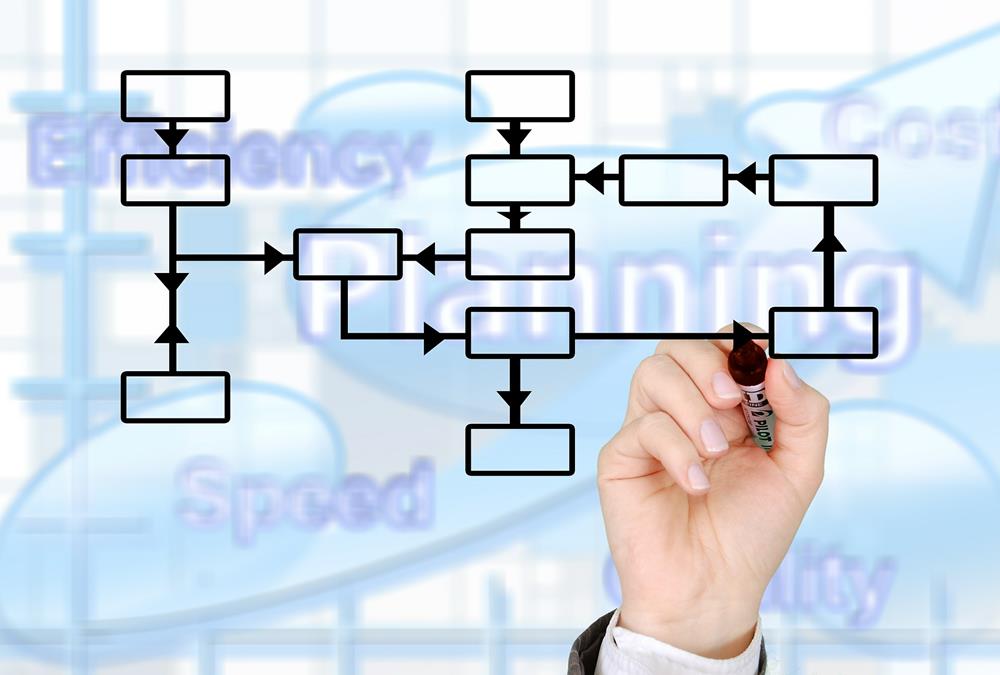- Home
- Business Processes
- Industry Knowledge
- Aerospace Industry
- Automotive Industry
- Banking Domain
- BFSI Industry
- Consumer/ FMCG Industry
- Chemicals Industry
- Engineering & Construction
- Energy Industry
- Education Domain
- Finance Domain
- Hospitality Domain
- Healthcare Industry
- Insurance Domain
- Retail Industry
- Travel and Tourism Domain
- Telecom Industry
- Leadership Skills
- eLearning
- Home
- Functional
- Procure to Pay
- Overview of Warehouse Processes
Overview of Warehouse Processes
The basic function of a warehouse is to store goods. This means that they receive deliveries from suppliers, do any necessary checking and sorting, store the materials until it is dispatched to customers. Traditionally warehouses were seen as places for the long-term storage of goods. Now organizations want to optimize their customer experience and try to move materials quickly through the supply chain, so the role of warehousing has changed.
The basic function of a warehouse is to store goods. This means that they receive deliveries from suppliers, do any necessary checking and sorting, store the materials until it is dispatched to customers. Traditionally warehouses were seen as places for the long-term storage of goods. Now organizations want to optimize their customer experience and try to move materials quickly through the supply chain, so the role of warehousing has changed.
Given below are the list of activities that are generally included in today's ‘warehousing’
- Receiving goods from suppliers.
- Identifying the goods, matching them to orders and finding their intended use.
- Unloading materials from delivery vehicles.
- Doing checks on quantity and quality.
- Sorting goods as needed.
- Labelling the goods.
- Moving goods to storage area.
- Holding them in stock.
- Moving materials within warehouse.
- Picking materials for orders.
- Packing and packaging.
- Loading delivery vehicles.
- Dispatching the order.
- Inventory control and finance.
This is a generic layman view of the warehouse process. Now we will look at the same process from warehouse management perspective and do a deep dive into all of the warehouse activities understanding their drivers and industry wide used execution model.
Warehouse Management Work Processes
Warehouse management is one facet of supply chain management. The Warehouse management includes a wide range of sub-processes and activities to support the warehouse facility operating at an optimal level, at any time. Warehouse processes need to be integrated with other business processes such as transportation, manufacturing, quality control, purchase, transfer, sales, and returns. Any store, factory, or distribution center employs eight high-level processes for physical inventory:
- Inbound Receiving Process
- Inbound Put-away
- Warehouse Picking Process
- Warehouse Packing Process
- Outbound Shipping Process
- Warehouse Counts Process
- Warehouse Returns Process
- Warehouse Labelling Process
- Warehouse Staffing and Roles
- Miscellaneous Warehouse Processes
- Warehouse Reporting
|
Inbound Receiving Process |
When products arrive at a facility, there need to be a defined process to let them in. The process for accepting inventory when it arrives is called "Receiving". |
|
Inbound Put-away |
After products have been received and passed a quality inspection, they need to be stored so that you can find them when you need them. This process is called put-away. |
|
Warehouse Picking Process |
Order picking is the process of selecting items from a warehouse , to fulfill customer orders. |
|
Warehouse Packing Process |
The packing process allows you to validate and pack products into containers. The packaging is intended to provide protection for the item as it is being handled in the warehouse or when the item is being shipped. |
|
Outbound Shipping Process |
The final step is to send ship loads out of the warehouse once all the work that is associated with those loads has been completed. |
|
Warehouse Counts Process |
Counts are typically done to eliminate mismatches between the system and the actual inventory. |
|
Warehouse Returns Process |
A return is the process of handling the return of products from a customer to the distribution center. |
|
Warehouse Labelling Process |
Labelling is done to streamline warehouse organization and make sure workers can easily identify every section, rack, and carton. |
|
Warehouse Staffing and Roles |
Staffing is concerned with the planning for expected workload and determine the number of resources required to complete each activity. |
|
Miscellaneous Warehouse Processes |
Miscellaneous processes to manage the warehouse operations. |
|
Warehouse Reporting |
Preparation and availability of right kind of operational and inventory reports across the warehouse for effective control of warehouse operations. |
Related Links
You May Also Like
-
Transport operations are often divided into full load and part load and due to economies of scale, the unit costs are higher for part loads. Our customer needs several part loads delivering, so it can reduce costs by consolidating these into full loads. Then it gets all the part loads delivered to a warehouse near the suppliers, consolidates them into full loads, and pays the lower costs of full-load transport to its operations.
-
The Outbound process starts with routing the shipments. The Outbound execution process starts from the point when pick tasks are completed for an outbound shipment and ends at the point where the outbound packages are loaded into trailers. The Warehouse Outbound process includes managing and controlling outgoing materials starting from the download of orders through to the shipping of products from the warehouse.
-
One of the most important decisions when running a warehouse is its layout. Warehouse layout defines the physical arrangement of storage racks, loading and unloading areas, equipment and other facility areas in the warehouse. A good layout aligned with the business needs could have a significant effect on the efficiency.
-
Types of Inventory Count Processes
While dealing with lots of inventory in a warehouse, lots of things can go wrong. Shipments may not have the right number of units in them, or they could get damaged somewhere along the supply chain. Discrepancies in the stock may arise as part of every inventory control, and need to be corrected immediately after the inventory control procedure has been finished.
-
Overview of Warehouse Processes
The basic function of a warehouse is to store goods. This means that they receive deliveries from suppliers, do any necessary checking and sorting, store the materials until it is dispatched to customers. Traditionally warehouses were seen as places for the long-term storage of goods. Now organizations want to optimize their customer experience and try to move materials quickly through the supply chain, so the role of warehousing has changed.
-
Inventory is money, and hence businesses need to perform physical inventory counts periodically to make sure that their inventory records are accurate. The traditional approach to conducting inventory counts is to shut down a facility during a slow time of year to count everything, one item at a time. This process is slow, expensive, and (unfortunately) not very accurate.
-
Miscellaneous Warehouse Processes
At the end of each inventory control, the Contractor provides the Ordering Person with an inventory report which contains a list of all stock adjustments. The Ordering Person uses the report to create, by use of his/her own means, necessary value and accounting adjustments related to the stock. Let us look at some to the mislaneous warehouse processes not covered earlier.
-
To stay competitive in today’s tough market, the location of your warehouse is vital. To grow retail business need to offer to customers faster and affordable shipping time, which is dependent on the warehousing location as the location of the warehouse affects the transit time to ship orders to customers.
-
After products have been received and passed a quality inspection, they need to be stored so that you can find them when you need them. This process is called putaway. The spot where you store a particular product is called a location. One section of a warehouse might have small locations for light items; another area may have large locations on the floor for heavy items.
-
What is a Warehouse & why companies need them?
All organizations hold stocks. In virtually every supply chain, gaps exist between when something is produced and when a customer is ready to buy or receive it. Stocks occur at any point in the supply chain where the flow of materials is interrupted. This implies that products need to be stored during this period of gap.
Explore Our Free Training Articles or
Sign Up to Start With Our eLearning Courses

About Us
Learning
© 2023 TechnoFunc, All Rights Reserved











